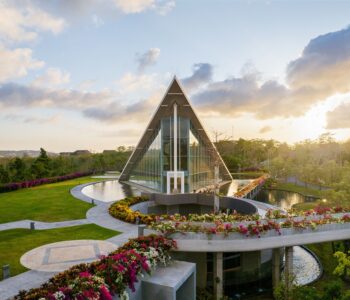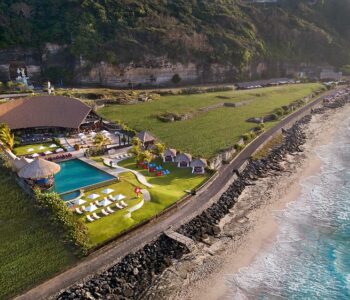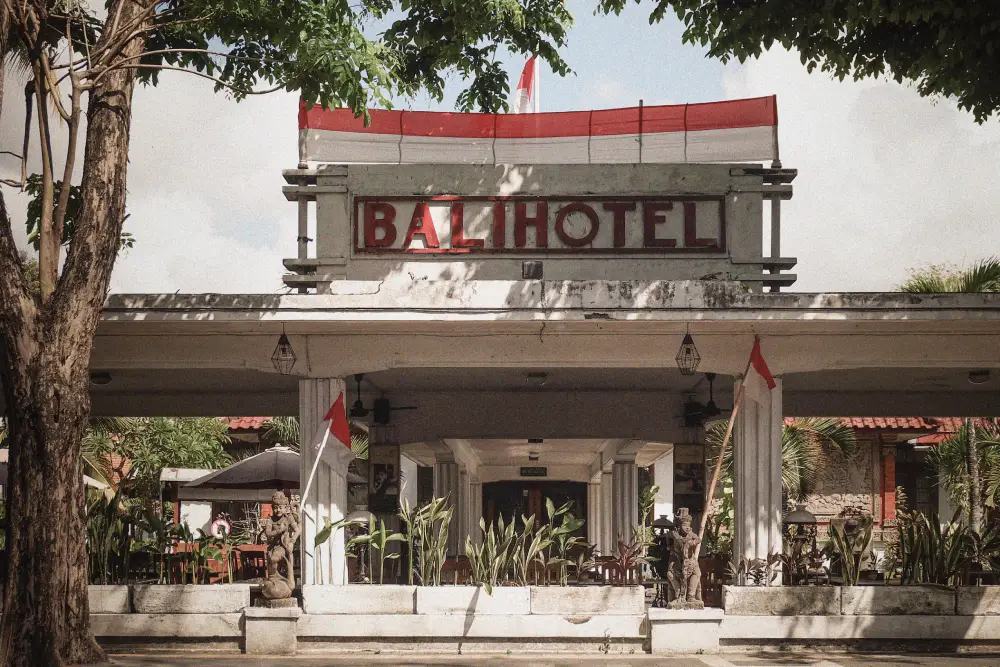
Behind its constant clamour of commerce, Bali’s capital is home to a rich history. Between the tradesmen and shophouses, government buildings and ageing arcades, Denpasar hides a full spectrum of intriguing historical sites that share of the island’s past, from royal rule to ritual warfare, colonial control to commercial centre.
Yes, Denpasar is certainly a far cry from the ‘island life’ that Bali itself promotes to the world. It is a low-rise cityscape, serving the needs of residents: functional, administrative, domestic. It’s no ‘metropolitan’ either, hardly enticing global high-flyers to come to see and be seen. The tourist hubs have all of that covered. In fact, a lot of it comes across as a little dated and chaotic.
But that is perhaps its main appeal. It is an authentic portrayal of everyday life on the island, no façade for the tourist eyes! As such, it is certainly a refuge for residents to getaway from the tourism bubble. What may be seen as ‘exotic culture’ in tourist regions is merely a fact of life in the city, with temples or ceremonies part of the daily humdrum. This may explain why the interesting destinations in Denpasar are scarcely visited, obscured by the ordinary — but they are interesting nonetheless!
Under Ancient Rule: The Birth of Denpasar
Denpasar has long been a significant region in Bali. Ancient inscriptions, such as the Blanjong inscription in Sanur (913 AD), hint at an organised civilisation living in the area more than a thousand years ago!
Though, it was only after the Majapahit Empire entered Bali in 1343 that the area became of regional importance. Under the suzerainty of the Gelgel Kingdom (based in Klungkung, a vassal state of Majapahit), Bali was home to nine separate kingdoms (later to evolve into the nine regencies) one of which was Badung. Though not called Denpasar at the time, the area was the heart and centre of this southern dominion.
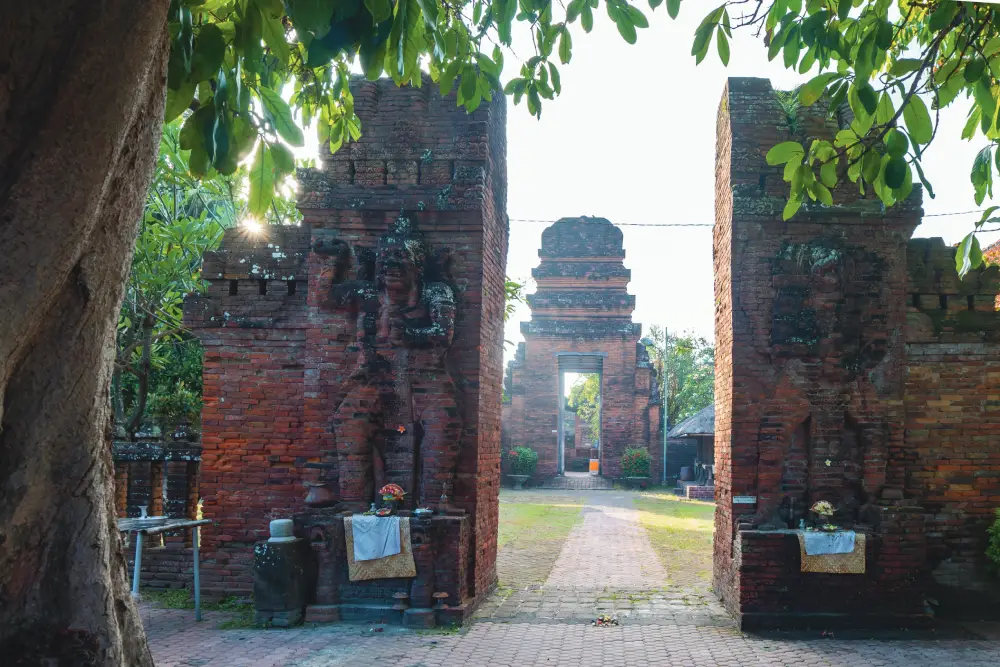
A significant remnant of that history is found at Pura Maospahit. The clue is certainly in the name as this ancient temple displays an architectural style that links it directly to the Majapahit style. For one, its use of red bricks is a distinguishing feature; the temple’s thick, almost stocky, outer and dividing walls, candi bentar gate and central kori agung doorway are reminiscent of the structures one would see in Trowulan (modern day Mojokerto), East Java, the heart of Majapahit.
The Candi Bentar between the outer and central compounds featuring specific ornamentation, large-scale depictions of the gods Bima and Garuda carved out of the brick. The pillars of the dividing wall also feature the carved figures of Cangkara, Indra, Yama, Kwera and Waruna.
Through the intricately carved doorway in the tiered Kori Agung, impressive in itself, one will enter the inner compound, or the jeroan. Here, more Majapahit stylisations are prevalent, especially the square-based shrines, with its bases featuring classical Majapahit iconography. One of the main shrine buildings, ‘Gedong Candi Raras Maospahit’ is believed to predate the temple complex (circa 14th century), chronicled as being made by the legendary Balinese warrior figure Kebo Iwa, though dates vary.
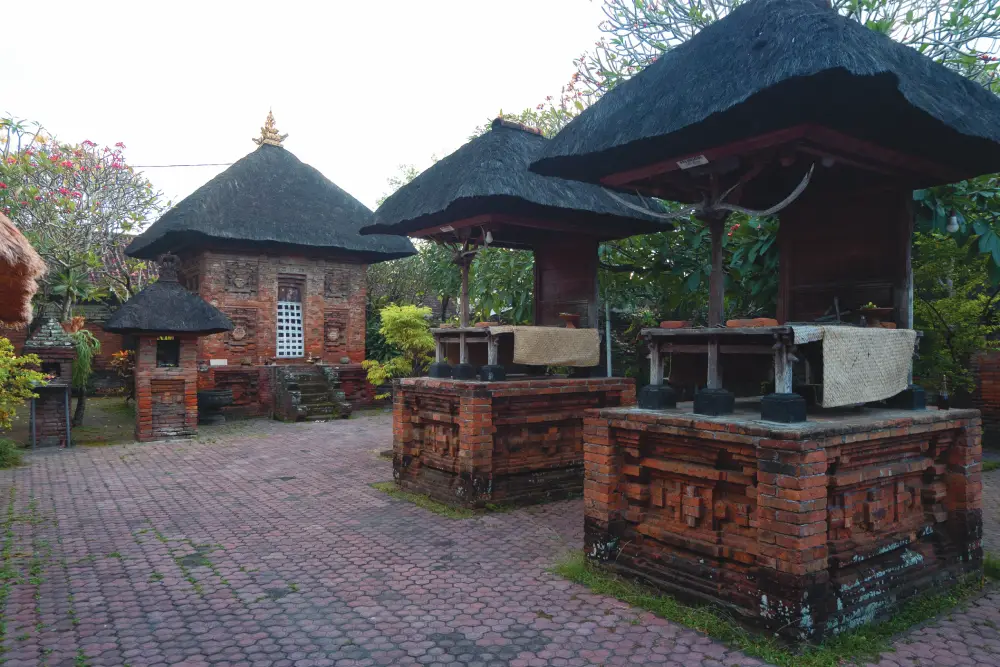
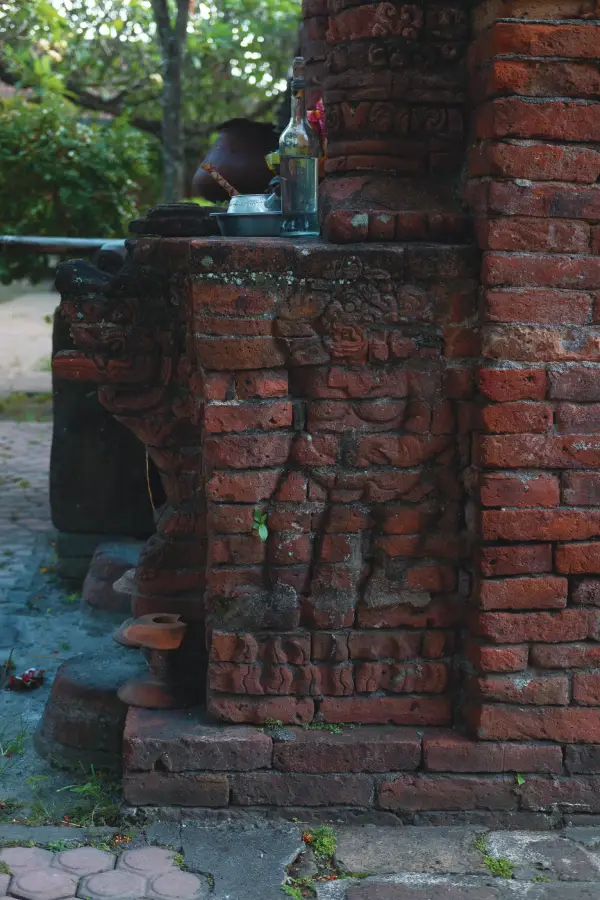
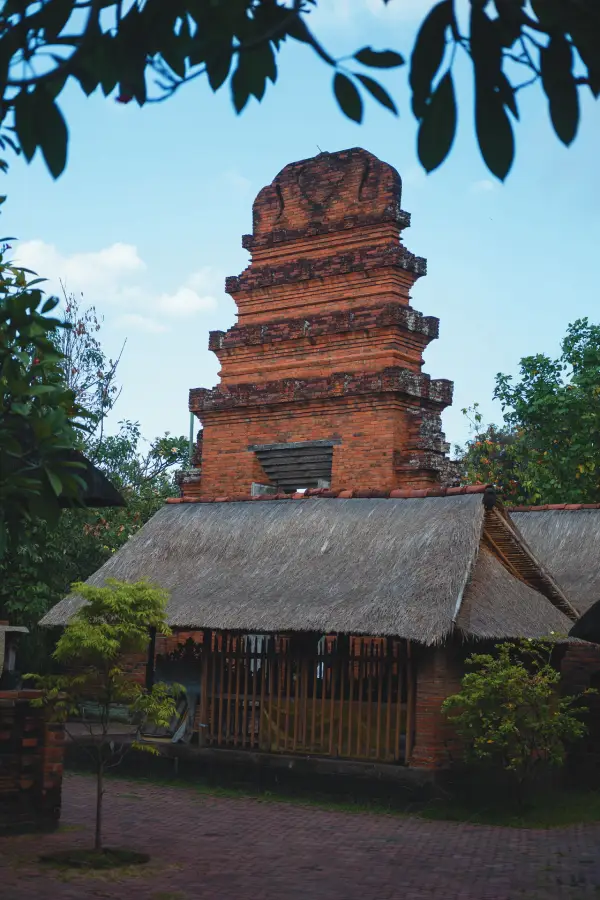
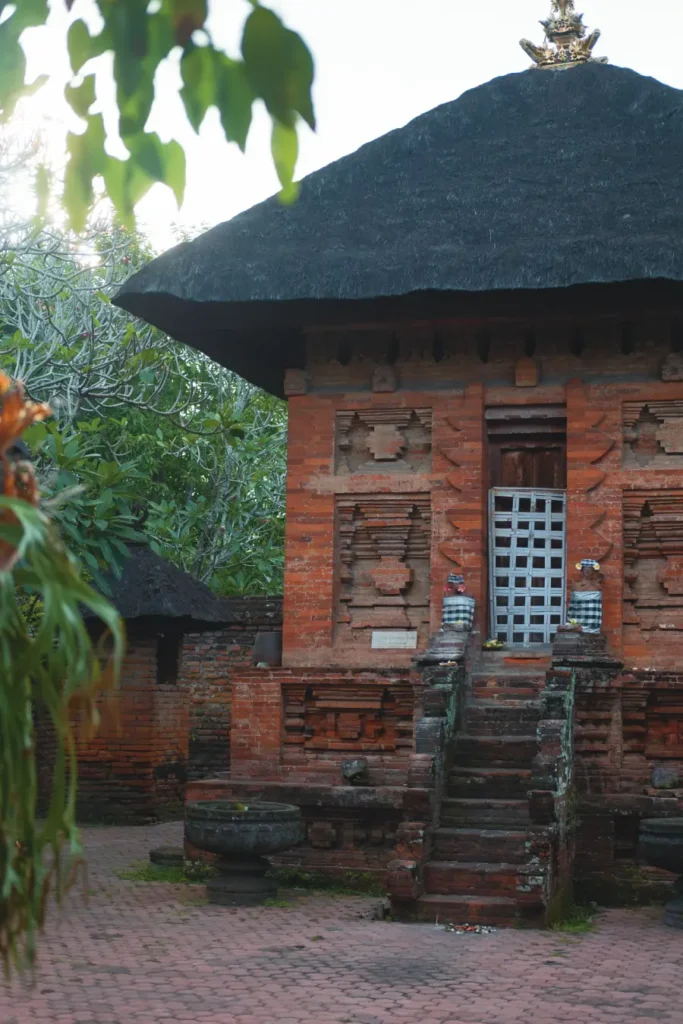
Badung was ruled for centuries by a single dynasty, seeing few changes from its initial establishment in the 14th century until the 18th century. Power struggles in the region saw a shift of leadership, seeing the fall of the Ksatria Palace and the rise of Puri Agung Denpasar in 1788 — this was to be the new official capital of the Kingdom of Badung, ruled by its first official king, I Gusti Ngurah Made Pemecutan.
This is where we finally see the origin of the name ‘Denpasar’, derived from the Balinese words “den” meaning north, and “pasar” meaning “market.” Puri Denpasar would thus translate directly as the Palace North of the Market.
Though the original Puri Agung Denpasar palace was destroyed (more on that later), another palace on the same road as Pura Maospahit offers a glimpse into what these extravagant royal compounds were like back in their heyday. Puri Agung Jro Kuta palace was built in 1820 by a descendant of the King of Klungkung, and as a heritage compound visitors are invited to explore certain areas of its vast grounds. Amazingly, much of the original architecture of this royal palace remains the same from when it was first built.
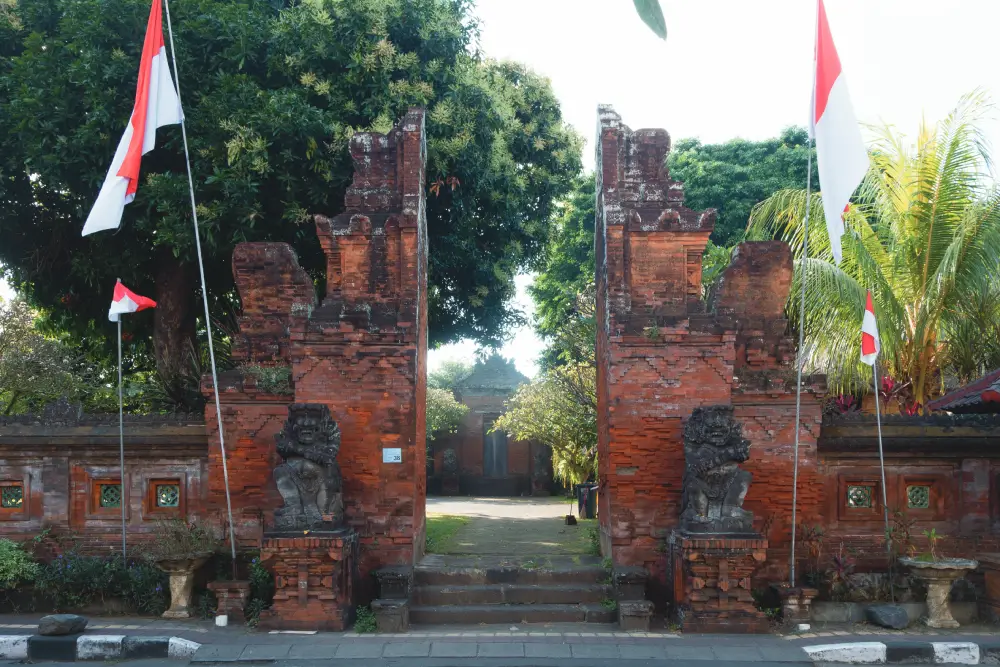
Now, Puri Agung Denpasar would not enjoy the centuries long reign like their predecessor, as a new threat would arrive in Bali that questioned not only Badung’s authority, but that of every kingdom on the island. The Dutch.
In the mid 19th century, the Dutch colonial government began their encroachment on Bali, having had a strong foothold in Java already. They approached from the north, agreeing to a treaty with the Kingdom of Buleleng and established quite a presence on the coastline. They sealed their control in 1849 and established the city of Singaraja as ‘their’ capital of Bali.
The south remained largely undisturbed until an incident in 1906 caused the Dutch to march into Denpasar. Outgunned and outmanned, rather than surrender to the Dutch, the King of Badung (I Gusti Ngurah Made Agung) and his subjects met the Dutch at the palace gates. Swathed in ceremonial white they together performed a gruesome ritual mass suicide, known as a puputan. An estimated 1,000 Balinese died in that moment, the palace was burned to the ground, and the Dutch officially took control of Denpasar.
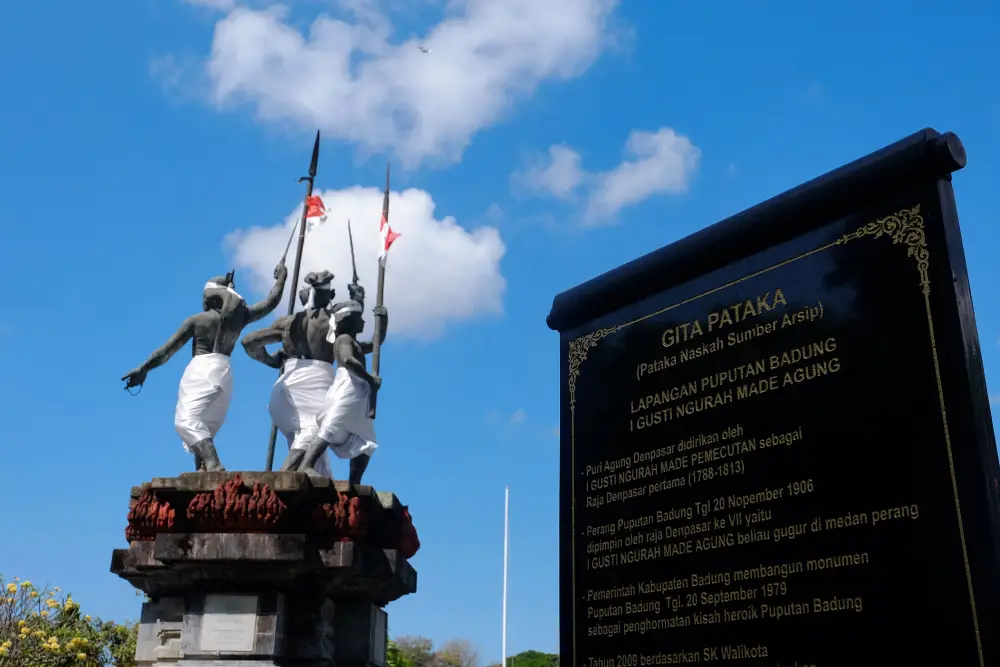
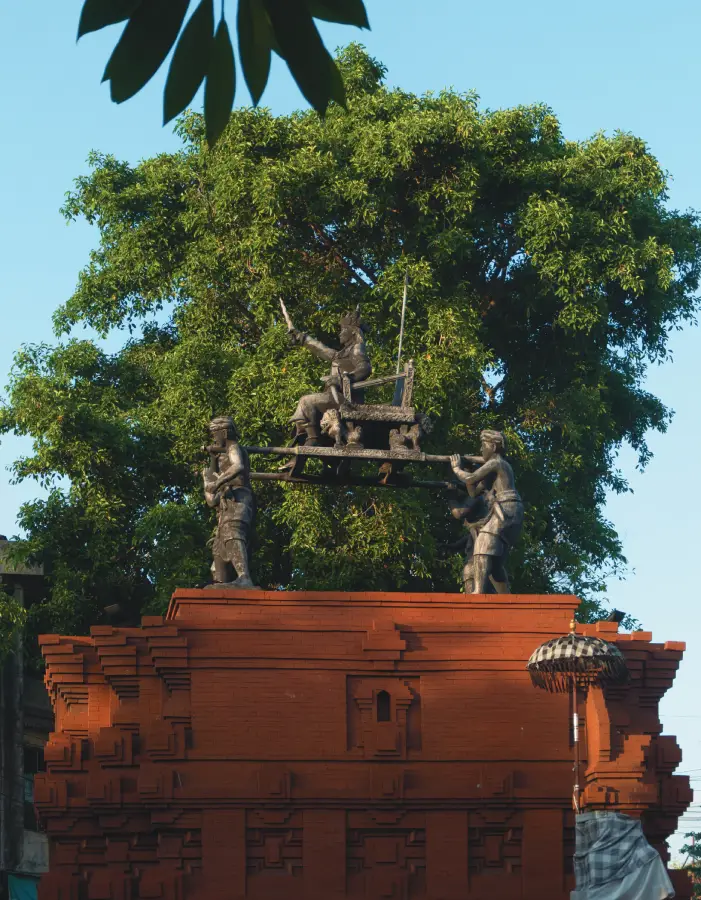
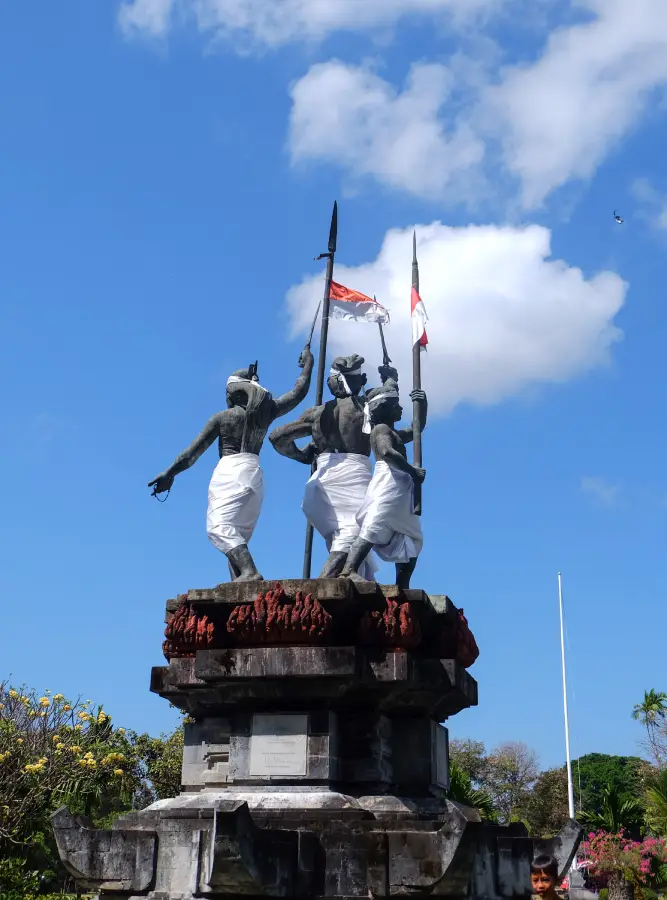
Puputan Badung — and indeed all of the puputan that took place (Buleleng, Kesiman, Klungkung) — was a proud act of defiance that remains engrained in the Balinese psyche. Statues honouring this moment are found in front of the Pemecutan Palace, depicting Ida Cokorda Pemecutan IX on his palanquin as he faced the Dutch; and the most famous statue standing in what is now called Puputan Square (Lapangan Puputan Badung). These monuments serve as powerful reminders of the Balinese spirit of resistance and the sacrifices made in the face of colonialism.
Colonialism and Commercialism
The Dutch quickly began to develop their southern stronghold, establishing Denpasar as a commercial centre. Pasar Badung (Badung Market) was formally established, growing around the existing traditional market; and around it a new artery road, Jalan Gajah Mada, was developed.
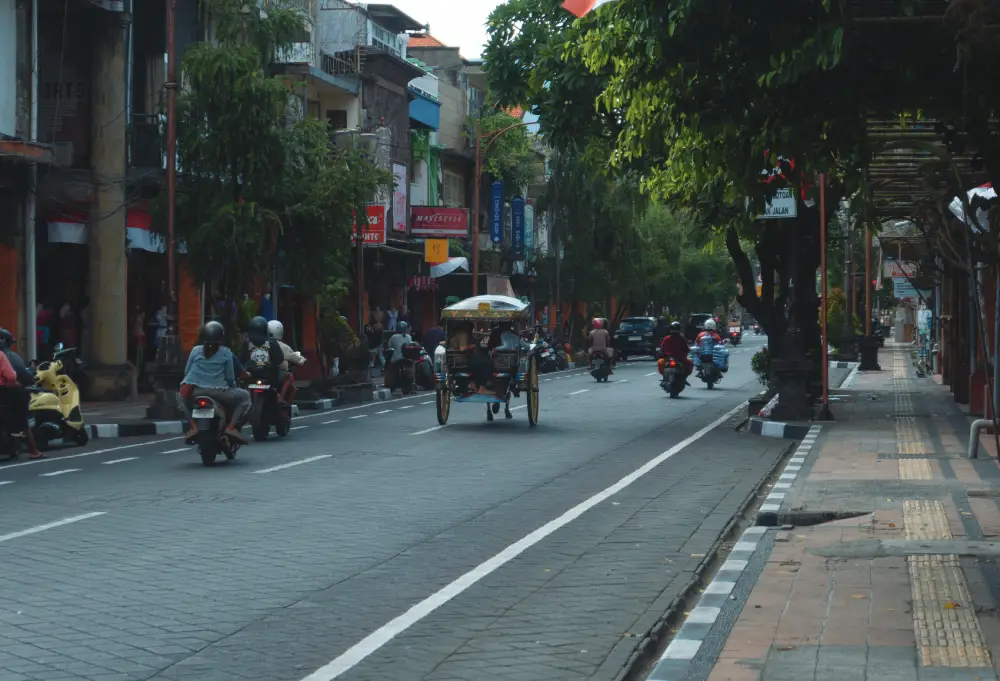
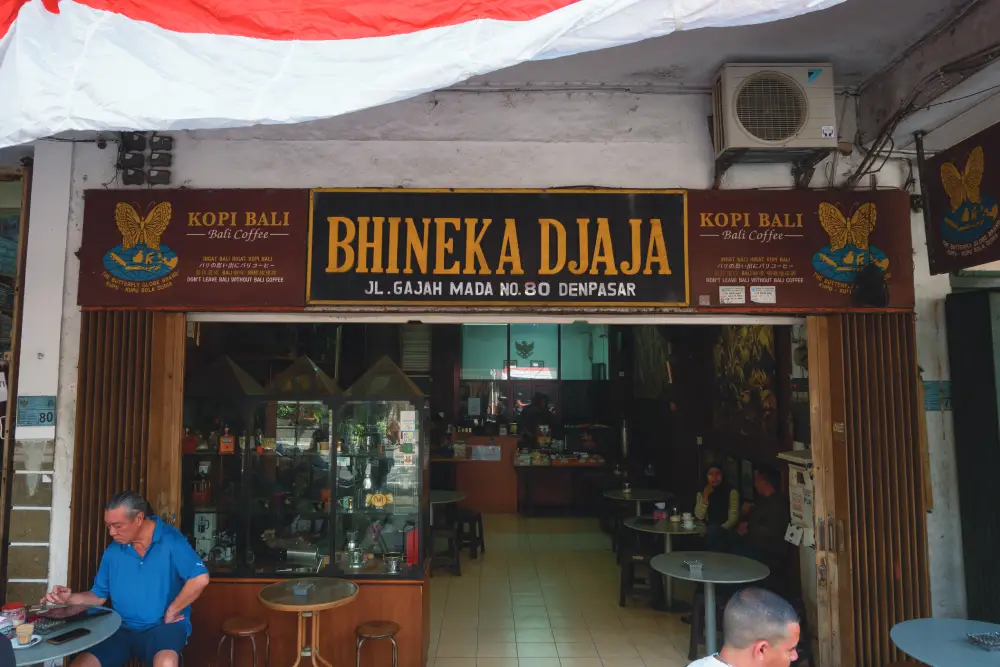
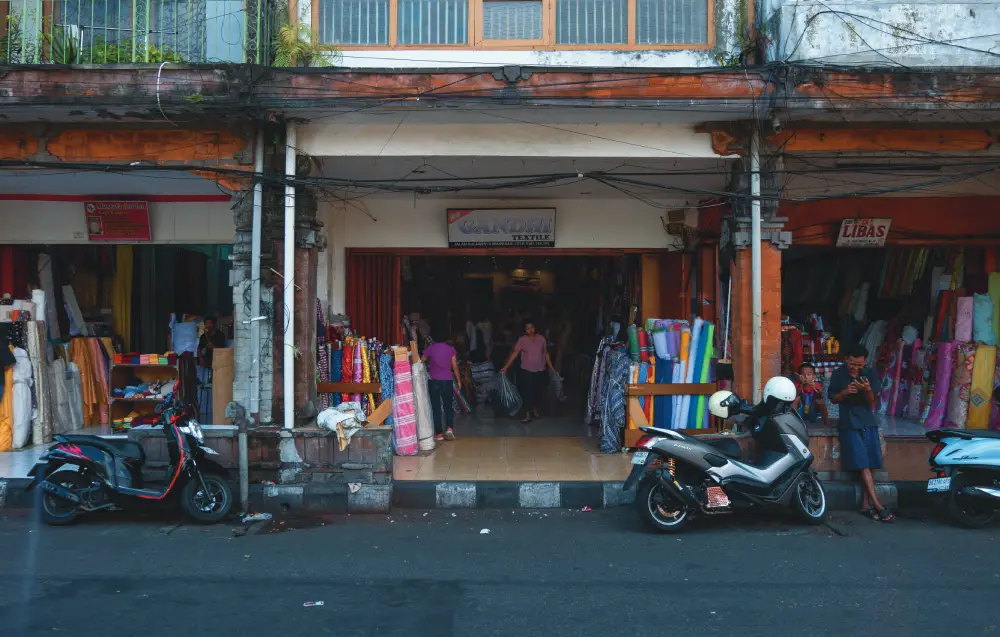
This became the business heart of the region, and the Dutch administrations plans for urban development came into effect. Gajah Mada, which was built around the 1930s, saw Chinese and Indian traders setting up shop, a demographic still seen today. Gold and textile sellers of Indian descent are found on Jalan Sulawesi and Jalan Hasanudin, for example; whilst the main strip shops are run by Chinese and Balinese, and certainly exhibits a more ‘Chinatown’ atmosphere.
One iconic spot on Gajah Mada is Bhineka Jaya (originally ‘Bian Ek’), a coffee shop established back in 1935. Founded by the the Tjahjadi family, this is the original shop for the now ubiquitous ‘Kopi Bali’ brand found across the island, and indeed across Indonesia and abroad. The legendary shop remains a mainstay on Jalan Gajah Mada, welcoming guests to take a seat and enjoy a sip of history.
At the centre of Jalan Gajah Mada is where one will find Pasar Badung. Now a behemoth of a market, brought indoors and modernised, this is where daily needs of local Denpasar society are found and met, predominantly food needs. It’s a window into everyday life, a bustling, dizzying maze of merchants like that found in many Southeast Asian countries.
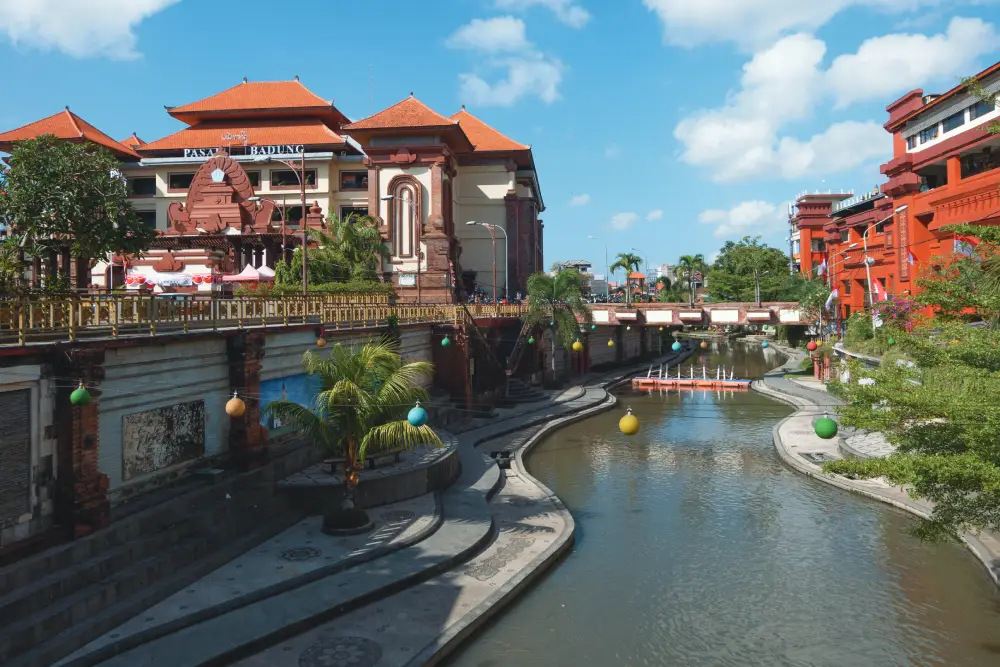
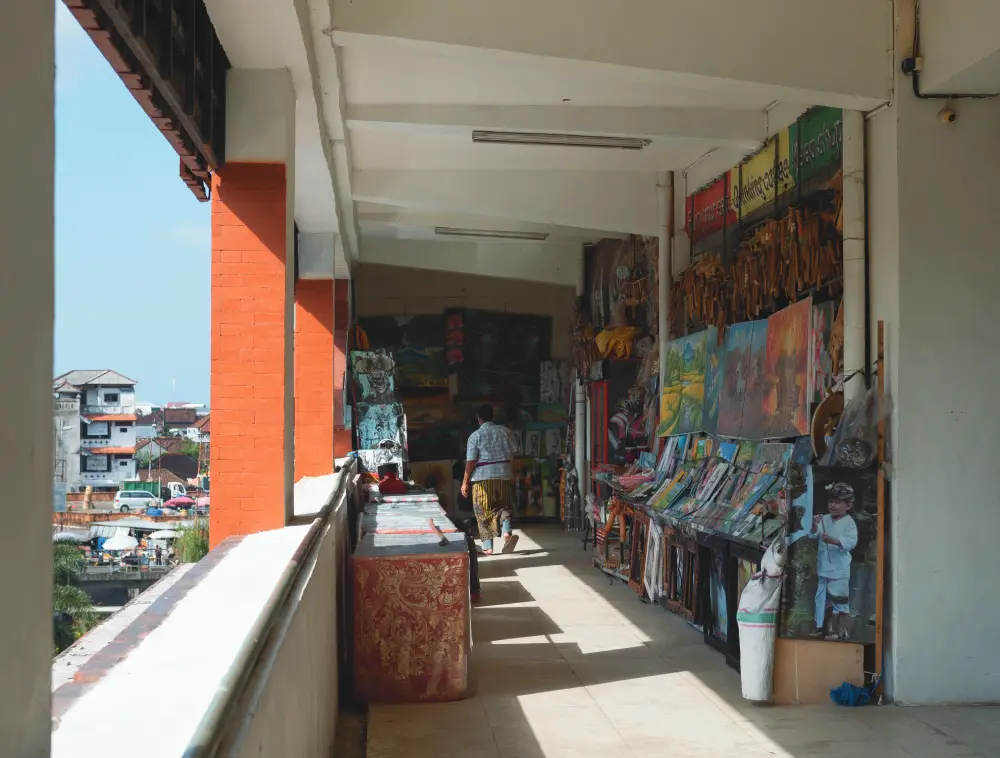
The surrounding area has also been rejuvenated, the adjacent river converted into a pedestrian area and local hangout. Across Pasar Badung one will find another market, Pasar Seni Kumbasari, a wholesale centre for souvenirs, cheap arts and crafts, sold in bulk. All in all, the markets and Jalan Gajah Mada have remained very much the same, but for the wares being sold and bought.
Checking In
Despite Dutch control, there are very few examples of colonial architecture found in Denpasar, said for one prominent establishment: The Bali Hotel.
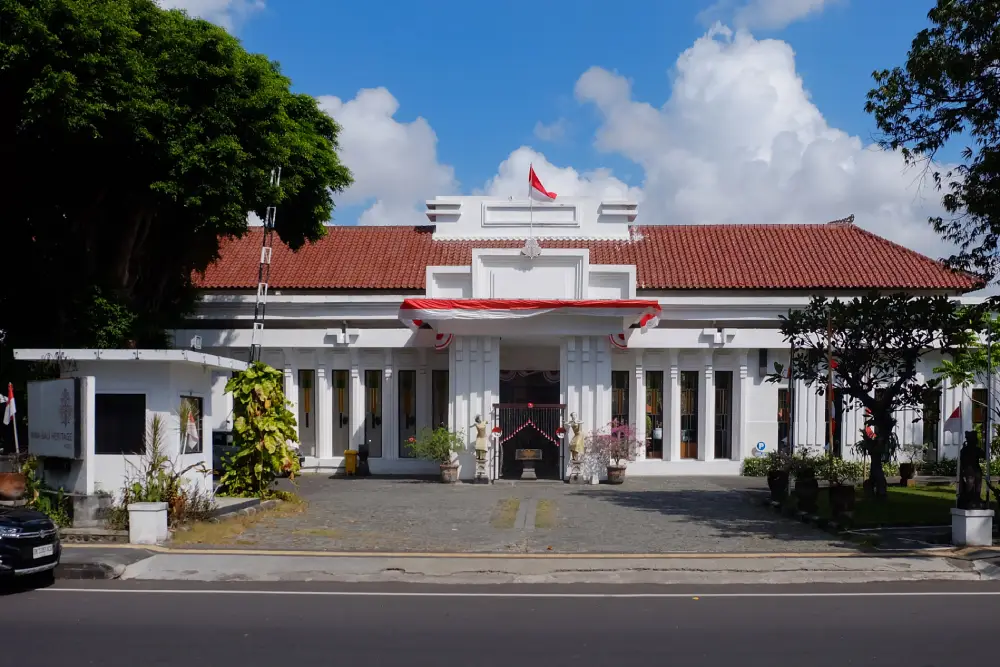
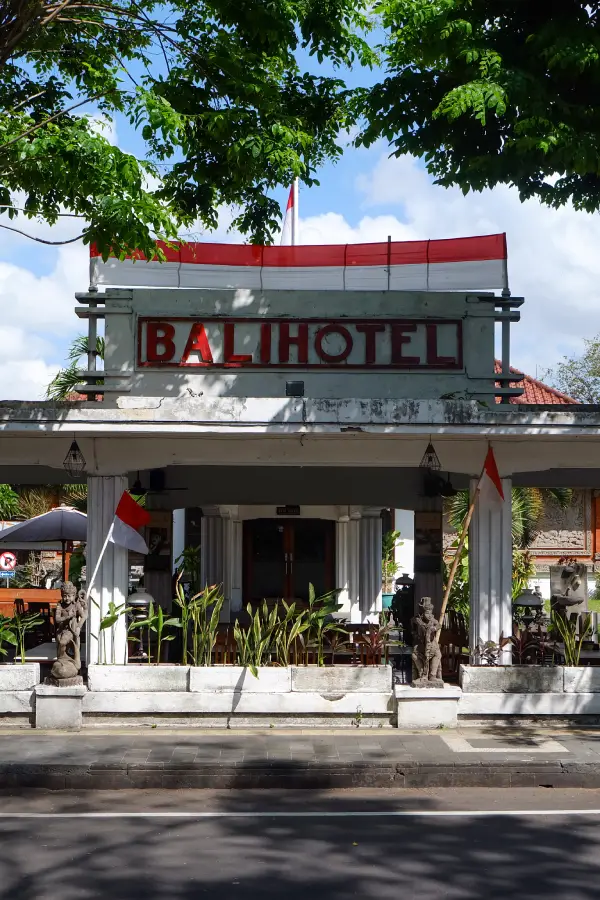
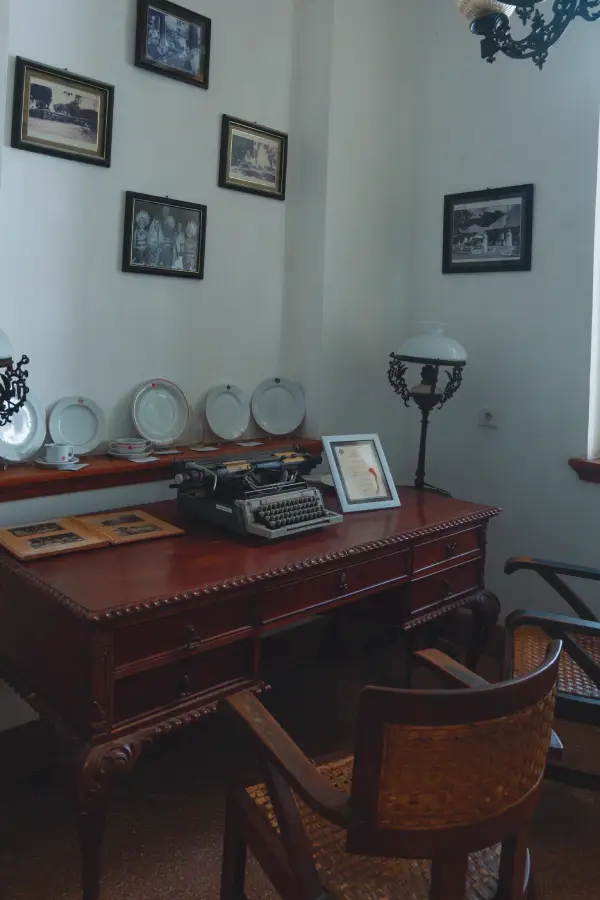
Built in 1925, though only officially opened in 1928, this was the first formal hotel on the island and marked the beginning of Bali as a tourist destination. As such this legendary establishment has played host to some of history’s most prominent figures, including: Indonesia’s first president Sukarno; Prime Ministers of India, Jawaharal Nehru and Mahatma Gandhi; Prime Minister of France, George Clemenceau; and a long list of international celebrities from Charlie Chaplin to anthropologist Margaret Mead, artists Walter Spies and Miguel Covarrubias; and local legend Muriel Stuart Walker, better known as ‘K’tut Tantri’ (that’s another story).
The hotel’s own records note that it was originally designed by Dutch architect, Frans Johan Louwrens Ghijsels, credited for many heritage colonial buildings in Jakarta. The Bali Hotel showcased a typical ‘Indies’ style architecture: broad and bone-white symmetrical façades, with central columned veranda and large, shuttered windows. The grounds and building retain much of this style to this day, offering an accurate portrayal of what it may have been like in the past. As a historical property, it is now run by Indonesia’s state-owned hospitality company and is branded as Inna Bali Heritage Hotel.
Only a short walk away from the hotel is Bali Museum, located on the east side of Puputan Square. The museum itself is history in itself, built in 1931 by a Dutch architect, it aims to showcase traditional Balinese architecture and compound layout. Across the four main buildings, visitors will find artefacts from Bali’s prehistoric era, including archaeological remains. The museum introduces elements of Balinese culture, from examples of hard-to-see offerings to textiles, statues, the performing arts and more.





